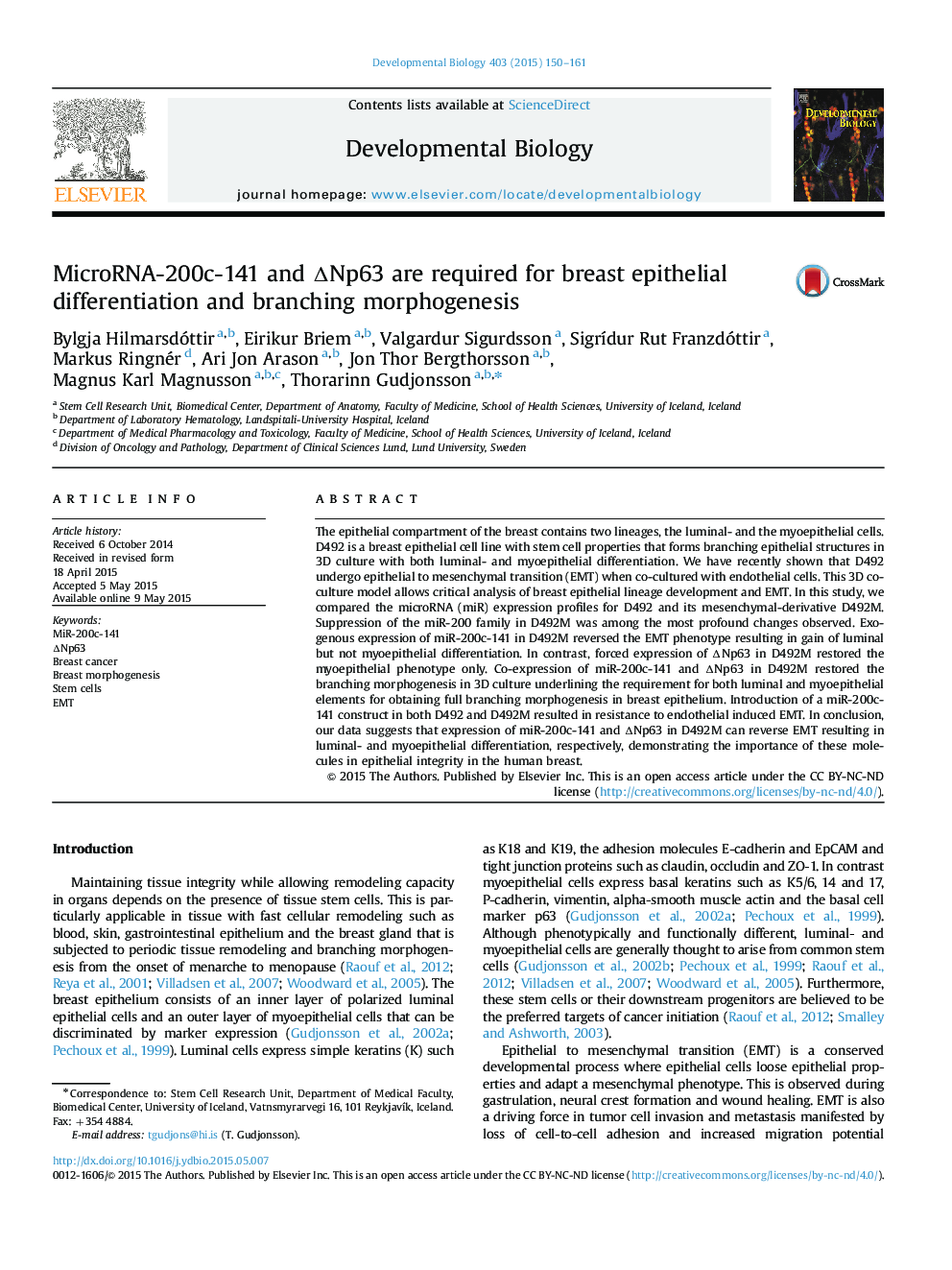| Article ID | Journal | Published Year | Pages | File Type |
|---|---|---|---|---|
| 10931476 | Developmental Biology | 2015 | 12 Pages |
Abstract
The epithelial compartment of the breast contains two lineages, the luminal- and the myoepithelial cells. D492 is a breast epithelial cell line with stem cell properties that forms branching epithelial structures in 3D culture with both luminal- and myoepithelial differentiation. We have recently shown that D492 undergo epithelial to mesenchymal transition (EMT) when co-cultured with endothelial cells. This 3D co-culture model allows critical analysis of breast epithelial lineage development and EMT. In this study, we compared the microRNA (miR) expression profiles for D492 and its mesenchymal-derivative D492M. Suppression of the miR-200 family in D492M was among the most profound changes observed. Exogenous expression of miR-200c-141 in D492M reversed the EMT phenotype resulting in gain of luminal but not myoepithelial differentiation. In contrast, forced expression of âNp63 in D492M restored the myoepithelial phenotype only. Co-expression of miR-200c-141 and âNp63 in D492M restored the branching morphogenesis in 3D culture underlining the requirement for both luminal and myoepithelial elements for obtaining full branching morphogenesis in breast epithelium. Introduction of a miR-200c-141 construct in both D492 and D492M resulted in resistance to endothelial induced EMT. In conclusion, our data suggests that expression of miR-200c-141 and âNp63 in D492M can reverse EMT resulting in luminal- and myoepithelial differentiation, respectively, demonstrating the importance of these molecules in epithelial integrity in the human breast.
Keywords
Related Topics
Life Sciences
Biochemistry, Genetics and Molecular Biology
Cell Biology
Authors
Bylgja Hilmarsdóttir, Eirikur Briem, Valgardur Sigurdsson, SigrÃdur Rut Franzdóttir, Markus Ringnér, Ari Jon Arason, Jon Thor Bergthorsson, Magnus Karl Magnusson, Thorarinn Gudjonsson,
